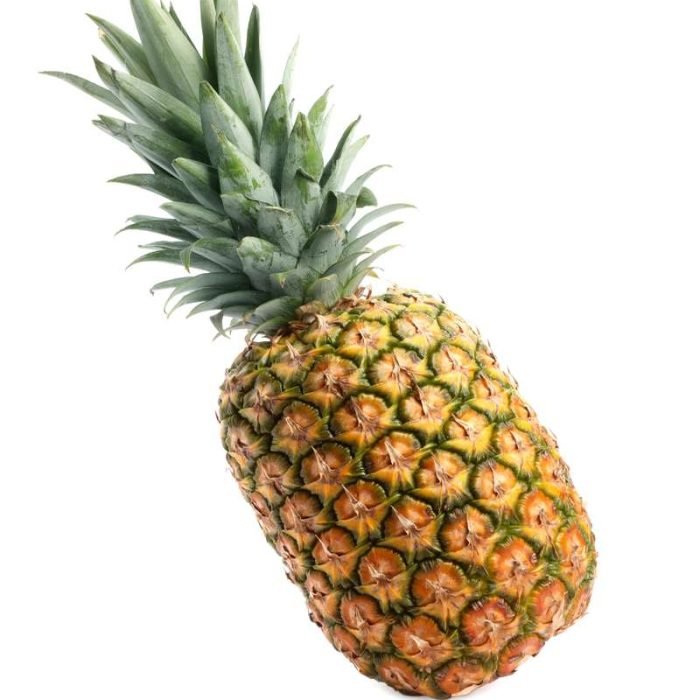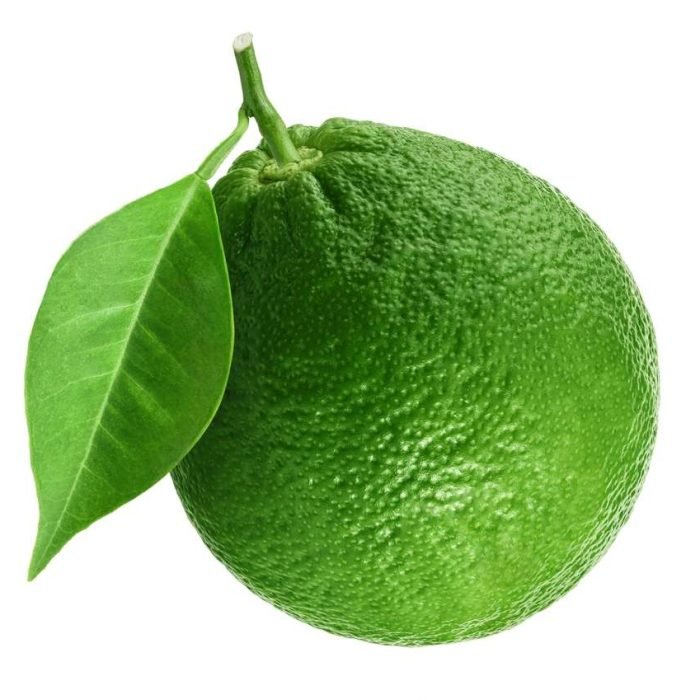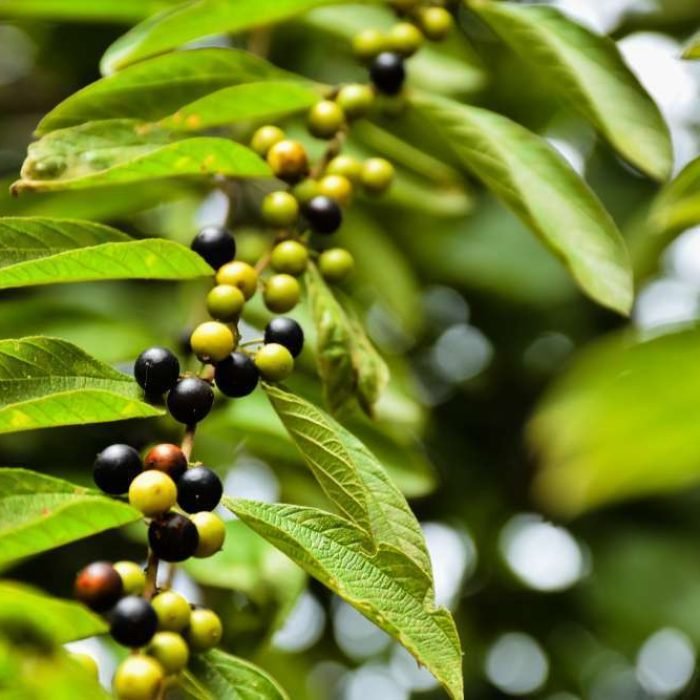Pineapple
( Chinanazi )
- Ananas comosus
- Tree Type: Evergreen

General Information
The pineapple is a herbaceous perennial, which grows to 1.0 to 1.5 m tall, although sometimes it can be taller. The plant has a short, stocky stem with tough, waxy leaves. When creating its fruit, it usually produces up to 200 flowers, although some large-fruited cultivars can exceed this. Once it flowers, the individual fruits of the flowers join together to create a multiple fruit. After the first fruit is produced, side shoots (called ‘suckers’ by commercial growers) are produced in the leaf axils of the main stem. These suckers may be removed for propagation, or left to produce additional fruits on the original plant. Commercially, suckers that appear around the base are cultivated. It has 30 or more narrow, fleshy, trough-shaped leaves that are 30 to 100 cm long, surrounding a thick stem; the leaves have sharp spines along the margins. In the first year of growth, the axis lengthens and thickens, bearing numerous leaves in close spirals. After 12 to 20 months, the stem grows into a spike-like inflorescence up to 15 cm long with over 100 spirally arranged, trimerous flowers, each subtended by a bract.Description
The fruit of a pineapple is a large, compact, multiple fruit and arranged in two interlocking helices, often with 8 in one direction and 13 in the other, each being a Fibonacci number.Cultivation
Pineapples grow as a small shrub; the individual flowers of the unpollinated plant fuse to form a multiple fruit. The plant is normally propagated from the offset produced at the top of the fruit, or from a side shoot, and typically mature within a year. In the wild, pineapples are pollinated primarily by hummingbirds. Certain wild pineapples are foraged and pollinated at night by bats. Under cultivation, because seed development diminishes fruit quality, pollination is performed by hand, and seeds are retained only for breeding.Uses
The flesh and juice of the pineapple are used in cuisines around the world. In many tropical countries, pineapple is prepared and sold on roadsides as a snack. It is sold whole or in halves with a stick inserted. Whole, cored slices with a cherry in the middle are a common garnish on hams in the West. Chunks of pineapple are used in desserts such as fruit salad, as well as in some savory dishes, including pizza toppings, or as a grilled ring on a hamburger. Traditional dishes that use pineapple include hamonado, afritada, kaeng som pla, and Hawaiian haystack. Crushed pineapple is used in yogurt, jam, sweets, and ice cream. The juice of the pineapple is served as a beverage, and it is also the main ingredient in cocktails such as the piña colada and in the drink tepache. In the Philippines, a traditional jelly-like dessert called nata de piña has also been produced since the 18th century. It is made by fermenting pineapple juice with Komagataeibacter xylinus. Pineapple vinegar is an ingredient found in Honduran, and Filipino cuisine, where it is produced locally. In Mexico it is usually made with peels from the whole fruit, rather than the juice, but in Taiwanese cuisine it is often produced by blending pineapple juice with grain vinegar.Share:
- Kingdom: Plantae
- Clade 1: Tracheophytes
- Clade 2: Angiosperms
- Clade 3: Monocots
- Clade 4: Commelinids
- Order: Poales
- Family: Bromeliaceae
- Genus: Ananas








